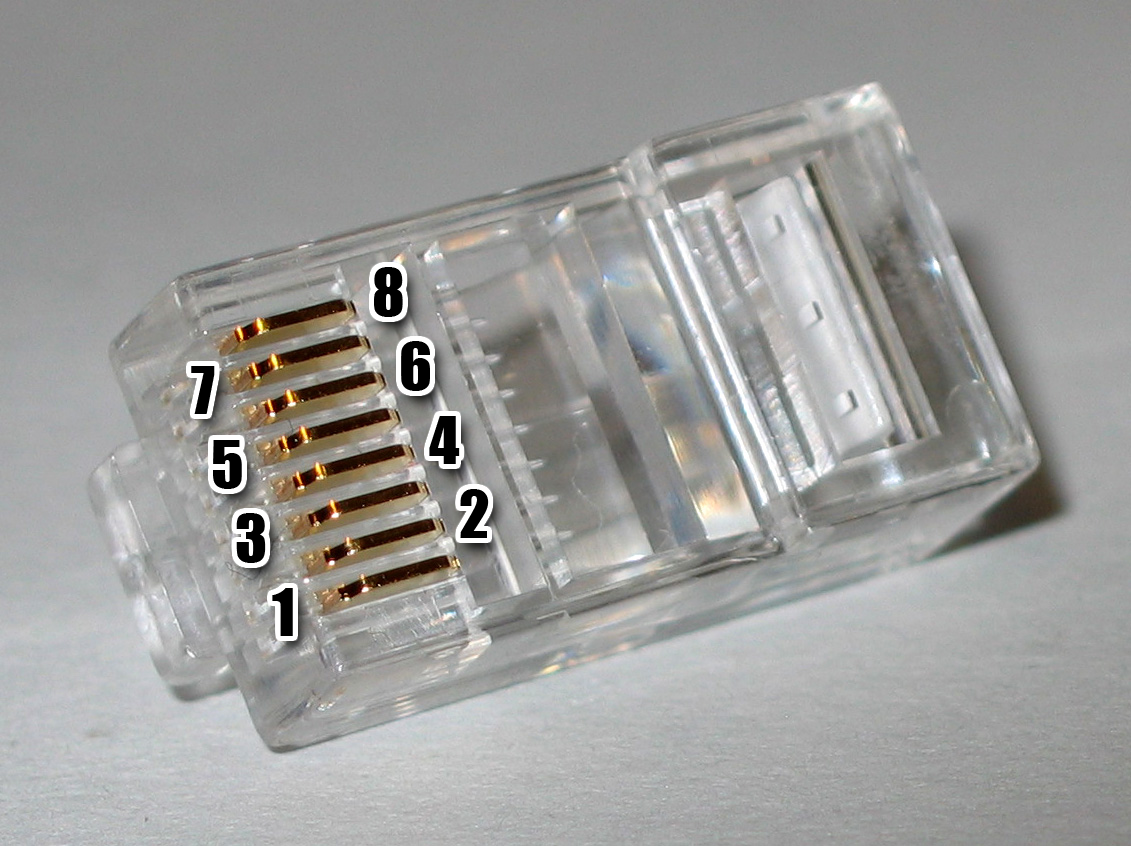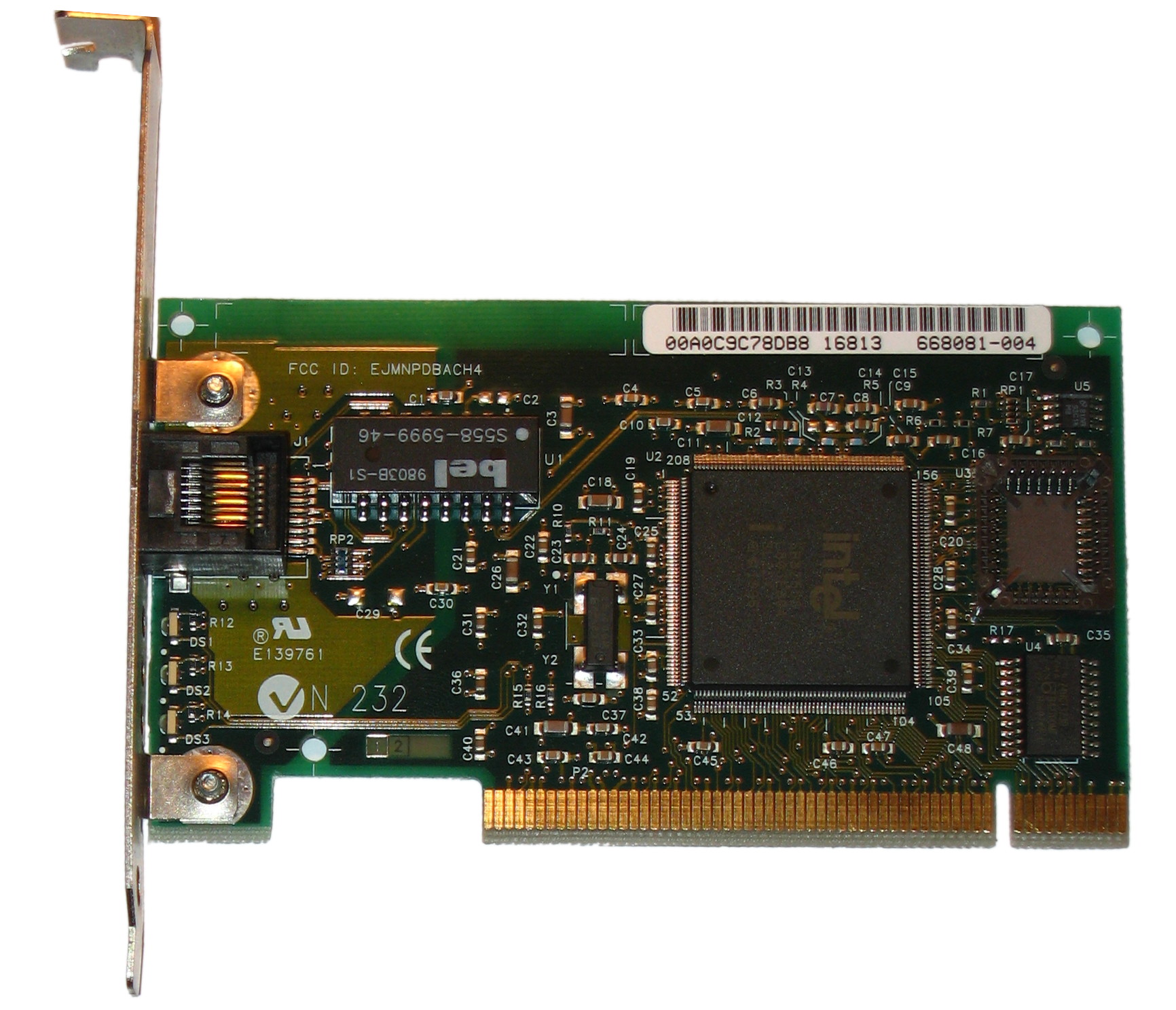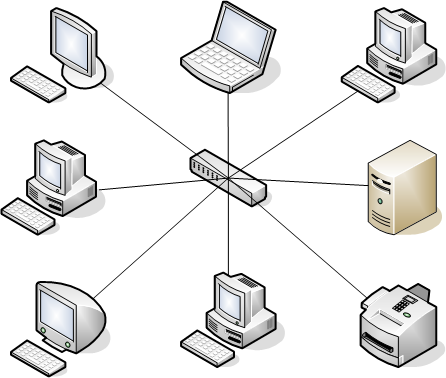|
Ethernet Over Twisted Pair
Ethernet over twisted-pair technologies use twisted-pair cables for the physical layer of an Ethernet computer network. They are a subset of all Ethernet physical layers. Early Ethernet used various grades of coaxial cable, but in 1984, StarLAN showed the potential of simple unshielded twisted pair. This led to the development of 10BASE-T and its successors 100BASE-TX, 1000BASE-T, 10GBASE-T and 40GBASE-T, supporting speeds of 10 and 100 megabit per second, then 1, 10 and 40 gigabit per second respectively. Two new variants of 10 megabit per second Ethernet over a ''single'' twisted pair, known as 10BASE-T1S and 10BASE-T1L, were standardized in IEEE Std 802.3cg-2019. 10BASE-T1S has its origins in the automotive industry and may be useful in other short-distance applications where substantial electrical noise is present. 10BASE-T1L is a long-distance Ethernet, supporting connections up to 1 km in length. Both of these standards are finding applications implementi ... [...More Info...] [...Related Items...] OR: [Wikipedia] [Google] [Baidu] |
8P8C
A modular connector is a type of electrical connector for cords and cables of electronic devices and appliances, such as in computer networking, telecommunication equipment, and audio headsets. Modular connectors were originally developed for use on specific Bell System telephone sets in the 1960s, and similar types found use for simple interconnection of customer-provided telephone subscriber premises equipment to the telephone network. The Federal Communications Commission (FCC) mandated in 1976 an interface registration system, in which they became known as registered jacks. The convenience of prior existence for designers and ease of use led to a proliferation of modular connectors for many other applications. Many applications that originally used bulkier, more expensive connectors have converted to modular connectors. Probably the best-known applications of modular connectors are for Telephone line, telephone and Ethernet. Accordingly, various electronic interface specif ... [...More Info...] [...Related Items...] OR: [Wikipedia] [Google] [Baidu] |
PHY-Level Collision Avoidance
PHY-Level Collision Avoidance (PLCA) is a component of the Ethernet reconciliation sublayer (between the PHY and the MAC) defined within IEEE 802.3 clause 148. The purpose of PLCA is to avoid the shared medium collisions and associated retransmission overhead. PLCA is used in 802.3cg (10BASE-T1), which focuses on bringing Ethernet connectivity to short-haul embedded internet of things and low throughput, noise-tolerant, industrial deployment use cases. In order for a multidrop 10BASE-T1S standard to successfully compete with CAN XL, some kind of arbitration was necessary. The linear arbitration scheme of PLCA somewhat resembles that of the Byteflight, but PLCA was designed from scratch to accommodate the existing shared medium Ethernet MACs with their busy sensing mechanisms. Operation Under a PLCA scheme all nodes are assigned unique sequential numbers (IDs) in the range from 0 to N. Zero ID corresponds to a special "coordinator" node that during the idle intervals t ... [...More Info...] [...Related Items...] OR: [Wikipedia] [Google] [Baidu] |
Twisted Pair
Twisted pair cabling is a type of communications cable in which two conductors of a single circuit are twisted together for the purposes of improving electromagnetic compatibility. Compared to a single conductor or an untwisted balanced pair, a twisted pair reduces electromagnetic radiation from the pair and crosstalk between neighboring pairs and improves rejection of external electromagnetic interference. It was invented by Alexander Graham Bell. For additional noise immunity, twisted-pair cabling may be shielded. Cable with shielding is known as shielded twisted pair (STP) and without as unshielded twisted pair (UTP). Explanation A twisted pair can be used as a balanced line, which as part of a balanced circuit can greatly reduce the effect of noise currents induced on the line by coupling of electric or magnetic fields. The idea is that the currents induced in each of the two wires are very nearly equal. The twisting ensures that the two wires are on average the ... [...More Info...] [...Related Items...] OR: [Wikipedia] [Google] [Baidu] |
Fast Ethernet
In computer networking, Fast Ethernet Ethernet physical layer, physical layers carry traffic at the nominal rate of . The Classic Ethernet, prior Ethernet speed was . Of the Fast Ethernet physical layers, 100BASE-TX is by far the most common. Fast Ethernet was introduced in 1995 as the IEEE 802.3u standard and remained the fastest version of Ethernet for three years before the introduction of Gigabit Ethernet. The acronym ''GE/FE'' is sometimes used for devices supporting both standards. Nomenclature The ''100'' in the media type designation refers to the transmission speed of , while the ''BASE'' refers to baseband signaling. The letter following the dash (''T'' or ''F'') refers to the physical medium that carries the signal (twisted pair or fiber, respectively), while the last character (''X'', ''4'', etc.) refers to the line code method used. Fast Ethernet is sometimes referred to as 100BASE-X, where ''X'' is a placeholder for the FX and TX variants. General design Fast ... [...More Info...] [...Related Items...] OR: [Wikipedia] [Google] [Baidu] |
Switching Hub
A network switch (also called switching hub, bridging hub, Ethernet switch, and, by the IEEE, MAC bridge) is networking hardware that connects devices on a computer network by using packet switching to receive and forward data to the destination device. A network switch is a multiport network bridge that uses MAC addresses to forward data at the data link layer (layer 2) of the OSI model. Some switches can also forward data at the network layer (layer 3) by additionally incorporating routing functionality. Such switches are commonly known as layer-3 switches or multilayer switches. Switches for Ethernet are the most common form of network switch. The first MAC Bridge was invented in 1983 by Mark Kempf, an engineer in the Networking Advanced Development group of Digital Equipment Corporation. The first 2 port Bridge product (LANBridge 100) was introduced by that company shortly after. The company subsequently produced multi-port switches for both Ethernet and FDDI such as Gig ... [...More Info...] [...Related Items...] OR: [Wikipedia] [Google] [Baidu] |
Repeater Hub
An Ethernet hub, active hub, network hub, repeater hub, multiport repeater, or simply hub is a network hardware device for connecting multiple Ethernet devices together and making them act as a single network segment. It has multiple input/output (I/O) ports, in which a signal introduced at the input of any port appears at the output of every port except the original incoming. A hub works at the physical layer. A repeater hub also participates in collision detection, forwarding a jam signal to all ports if it detects a collision. In addition to standard 8P8C (" RJ45") ports, some hubs may also come with a BNC or an Attachment Unit Interface (AUI) connector to allow connection to legacy 10BASE2 or 10BASE5 network segments. Hubs are now largely obsolete, having been replaced by network switches except in very old installations or specialized applications. As of 2011, connecting network segments by repeaters or hubs is deprecated by IEEE 802.3. Physical layer function A ... [...More Info...] [...Related Items...] OR: [Wikipedia] [Google] [Baidu] |
Bus Topology
A bus network is a network topology in which nodes are directly connected to a common half-duplex link called a bus. A host on a bus network is called a ''station''. In a bus network, every station will receive all network traffic, and the traffic generated by each station has equal transmission priority. A bus network forms a single network segment and collision domain. In order for nodes to share the bus, they use a medium access control technology such as carrier-sense multiple access (CSMA) or a bus master In computing, bus mastering is a feature supported by many bus architectures that enables a device connected to the bus to initiate direct memory access (DMA) transactions. It is also referred to as first-party DMA, in contrast with third-party .... References Network architecture Network topology {{Compu-network-stub ... [...More Info...] [...Related Items...] OR: [Wikipedia] [Google] [Baidu] |
Star Topology
A star network is an implementation of a spoke–hub distribution paradigm in computer networks. In a star network, every host is connected to a central hub. In its simplest form, one central hub acts as a conduit to transmit messages. The star network is one of the most common computer network topologies. Network The hub and hosts, and the transmission lines between them, form a graph with the topology of a star. Data on a star network passes through the hub before continuing to its destination. The hub manages and controls all functions of the network. It also acts as a repeater for the data flow. In a typical network the hub can be a network switch, Ethernet hub, wireless access point or a router The star topology reduces the impact of a transmission line failure by independently connecting each host to the hub. Each host may thus communicate with all others by transmitting to, and receiving from, the hub. The failure of a transmission line linking any host to the hu ... [...More Info...] [...Related Items...] OR: [Wikipedia] [Google] [Baidu] |
LattisNet
LattisNet was a family of computer networking hardware and software products built and sold by SynOptics Communications (also rebranded by Western Digital) during the 1980s. Examples were the 1000, 2500 and 3000 series of LattisHub network hubs. LattisNet was the first implementation of 10 Megabits per second local area networking over unshielded twisted pair wiring in a star topology. Ethernet variants During the early 1980s most networks used coaxial cable as the primary form of premises cabling in Ethernet implementations. In 1985 SynOptics shipped its first hub for fiber optics and shielded twisted pair. SynOptics' co-founder, Engineer Ronald V. Schmidt, had experimented with a fiber-optic variant of Ethernet called Fibernet II while working at Xerox PARC, where Ethernet had been invented. In January 1987 SynOptics announced intentions to manufacture equipment supporting 10 megabits/sec data transfer rates over unshielded twisted pair, telephone wire. In August 1 ... [...More Info...] [...Related Items...] OR: [Wikipedia] [Google] [Baidu] |
IEEE 802
IEEE 802 is a family of Institute of Electrical and Electronics Engineers (IEEE) standards for local area networks (LANs), personal area networks (PANs), and metropolitan area networks (MANs). The IEEE 802 LAN/MAN Standards Committee (LMSC) maintains these standards. The IEEE 802 family of standards has had twenty-four members, numbered 802.1 through 802.24, with a working group of the LMSC devoted to each. However, not all of these working groups are currently active. The IEEE 802 standards are restricted to computer networks carrying variable-size packets, unlike cell relay networks, for example, in which data is transmitted in short, uniformly sized units called cells. Isochronous signal networks, in which data is transmitted as a steady stream of octet (computing), octets, or groups of octets, at regular time intervals, are also outside the scope of the IEEE 802 standards. The number 802 has no significance: it was simply the next number in the sequence that the IEEE used fo ... [...More Info...] [...Related Items...] OR: [Wikipedia] [Google] [Baidu] |
IEEE Standards Association
The Institute of Electrical and Electronics Engineers Standards Association (IEEE SA) is an operating unit within IEEE that develops global standards in a broad range of industries, including: power and energy, artificial intelligence systems, internet of things, consumer technology and consumer electronics, biomedical and health care, learning technology, information technology and robotics, telecommunication, automotive, transportation, home automation, nanotechnology, information assurance, emerging technologies, and many more. IEEE SA has developed standards for over a century, through a program that offers balance, openness, fair procedures, and consensus. Technical experts from all over the world participate in the development of IEEE standards. IEEE SA provides a neutral platform that unites communities for standards development and technological innovation and is independent of any government oversight. IEEE SA develops standards that are consensus-based and has ... [...More Info...] [...Related Items...] OR: [Wikipedia] [Google] [Baidu] |
Category 8
International standard ISO/IEC 11801 ''Information technology — Generic cabling for customer premises'' specifies general-purpose telecommunication cabling systems (structured cabling) that are suitable for a wide range of applications (analog and ISDN telephony, various data communication standards, building control systems, factory automation). It is published by ISO/IEC JTC 1/ SC 25/WG 3 of the International Organization for Standardization (ISO) and the International Electrotechnical Commission (IEC). It covers both balanced copper cabling and optical fibre cabling. The standard was designed for use within commercial premises that may consist of either a single building or of multiple buildings on a campus. It was optimized for premises that span up to 3 km, up to 1 km2 office space, with between 50 and 50,000 persons, but can also be applied for installations outside this range. A major revision was released in November 2017, unifying requirements for commercial ... [...More Info...] [...Related Items...] OR: [Wikipedia] [Google] [Baidu] |






